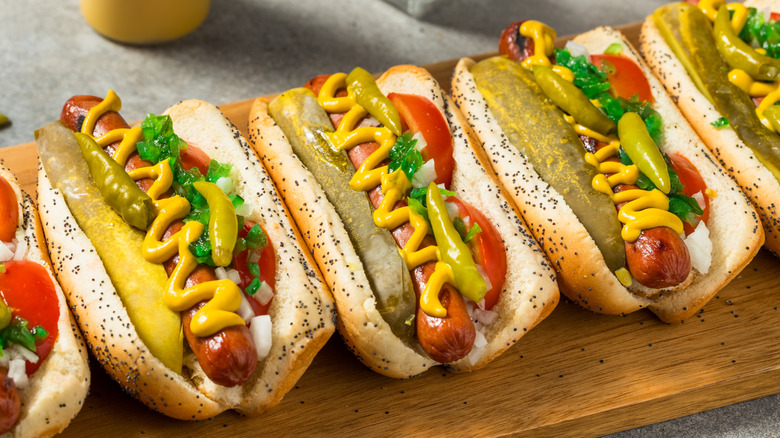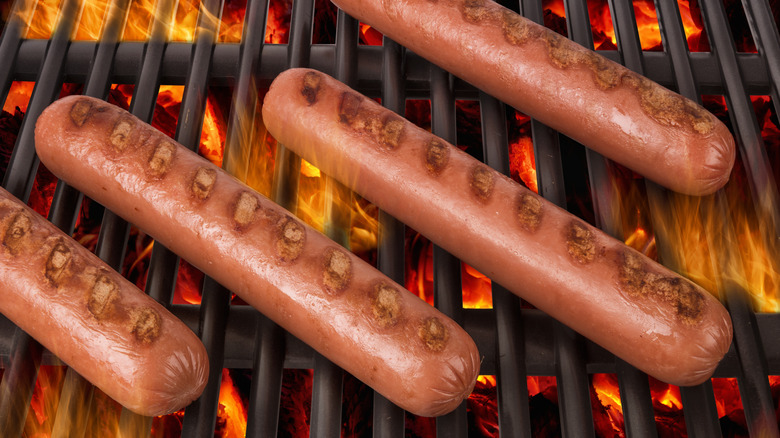The Chicago-Style Hot Dog Variation That Deserves More Credit
Chicago has long been a city of innovation when it comes to food. From classic, globally-loved staples like deep-dish pizza and Italian beef, to the beloved Chicago-style hot dog — considered to be the best style of hot dog, according to Anthony Bourdain – it's clear that Chicagoans take their food seriously. As of 2025, the Windy City currently boasts an impressive 19 Michelin-starred restaurants, making it the only Midwestern city features on the guide. Yet, at the heart of its culinary scene, it's the local classics that truly define Chicago's food identity and draw food lovers from around the world. Among these, one standout twist on tradition has been gaining some attention: the char dog, a flame-kissed variation of the beloved Chicago-style hot dog.
So, what makes a char dog different from a classic Chicago-style dog? Although they both share the same ingredients, the differences all come down to how the frankfurter is cooked. While a traditional Chicago-style dog is usually steamed or simmered, the char dog is flame-grilled, typically over charcoal or briquettes (Pro tip: we recommend poaching your frankfurters before grilling). This method gives the hot dog its signature character. Steaming keeps the classic version juicy but relatively mild in flavor, whereas grilling infuses the char dog with a distinct smokiness, adds depth, and creates a snappy, crisp, and caramelized exterior with char marks that keeps the fans lining up. The result is a bolder and more textured take on one of Chicago's most iconic street food staples.
What is the history of the char dog?
The Chicago-style hot dog and the char dog don't only differ in cooking method, they also carry distinct histories. According to Vienna Beef, often considered the godfather of the Chicago-style hot dog, its earliest iteration was introduced at the 1893 World's Columbian Exposition by two Jewish immigrants from Austria-Hungary. At the time, the hot dog consisted of just a frankfurter, mustard, and pickle. As waves of immigrants from Eastern and Southern Europe settled into Chicago's working-class neighborhoods, the hot dog — which skyrocketed in popularity during the Great Depression — evolved into the familiar version we know today, with the addition of fresh vegetable toppings symbolizing both sustenance and cultural fusion with Chicago's longstanding immigrant history.
The Chicago-style dog itself is a symbol of evolution and innovation, so it makes sense that the char dog would emerge as its natural successor. With the rise of open-flame grilling in the late 1940s and '50s, char dogs were born as a way to jump on the trend and to bring barbecue flavors into restaurants all-year-round. Today, popular Chicago institutions like Wolfy's, Fatso's Last Stand, and The Weiner Circle proudly keep the tradition alive, with the latter two serving char dogs exclusively. At Gold Coast Dogs, the ends of the franks are sliced into a crisscross pattern before grilling, causing the ends to curl out and crisp for extra texture. These variations highlight how Chicago continually reinvents its food traditions, while also staying true to its humble roots.


